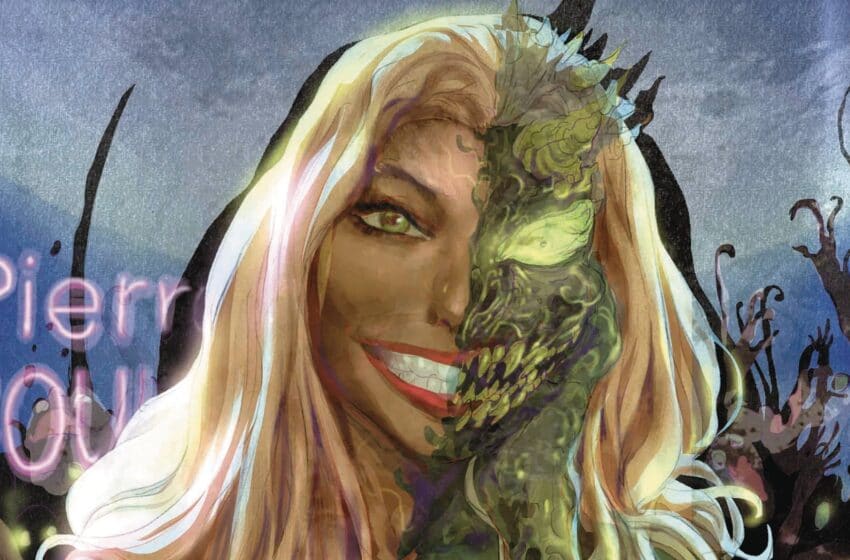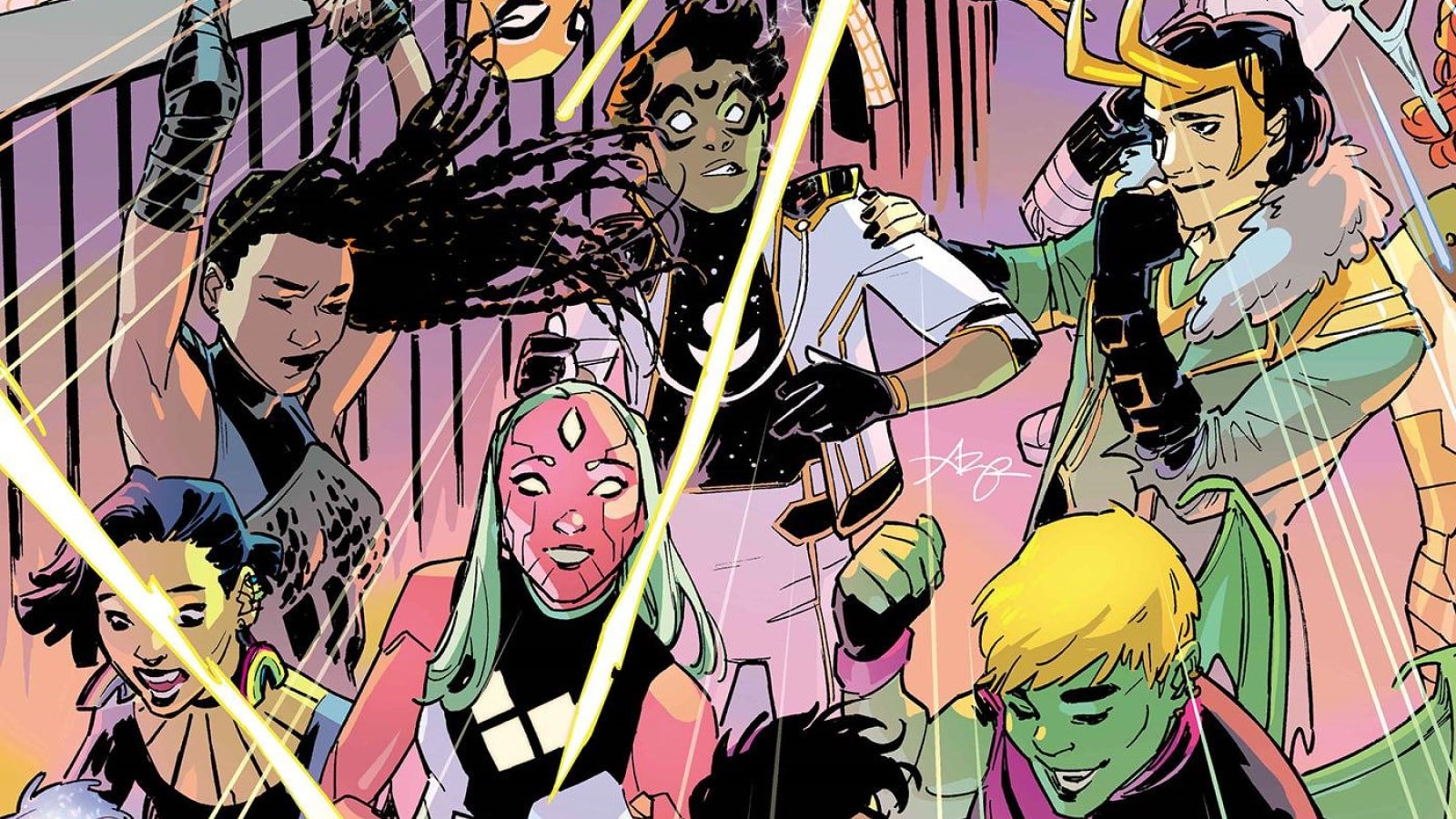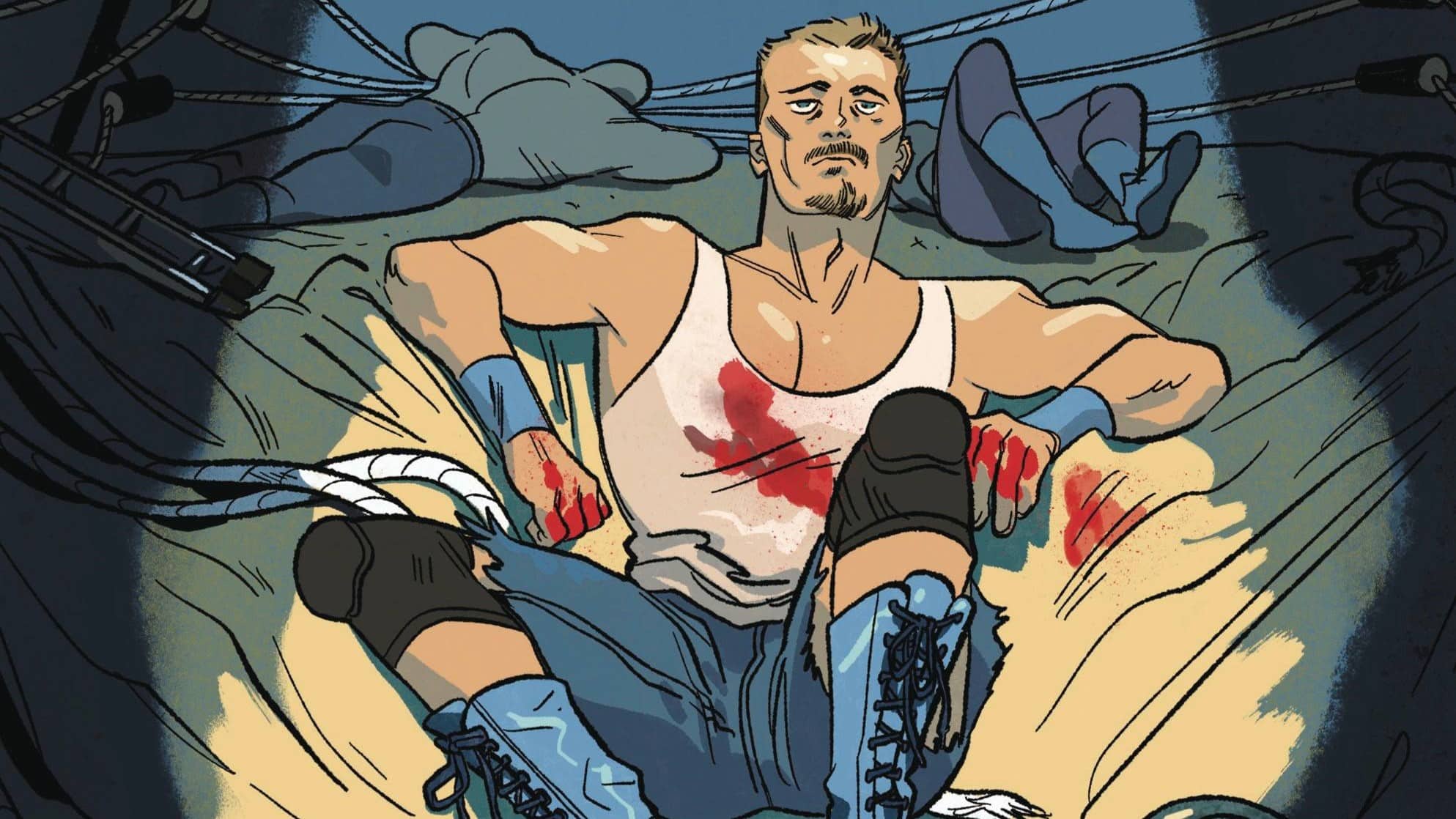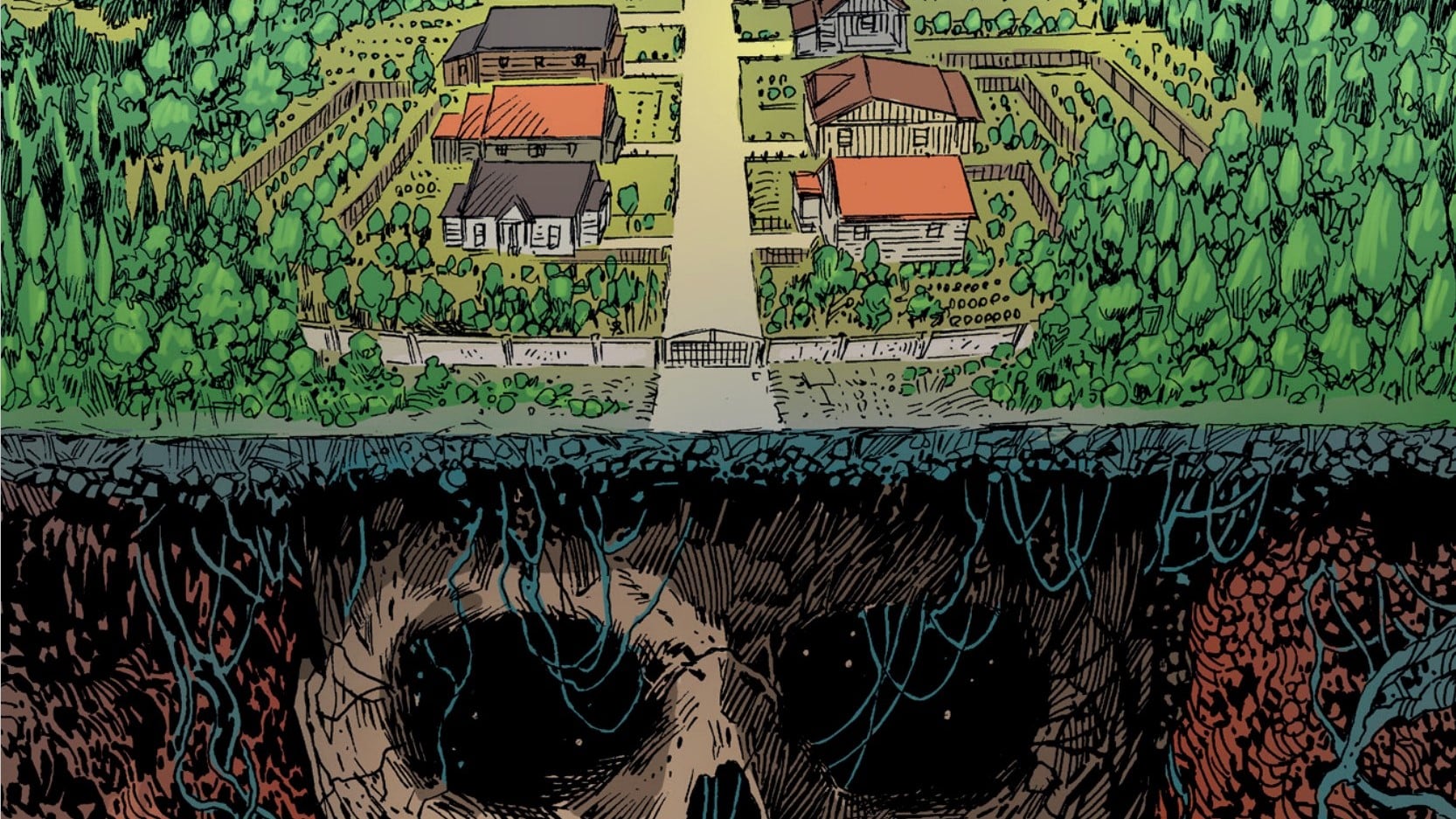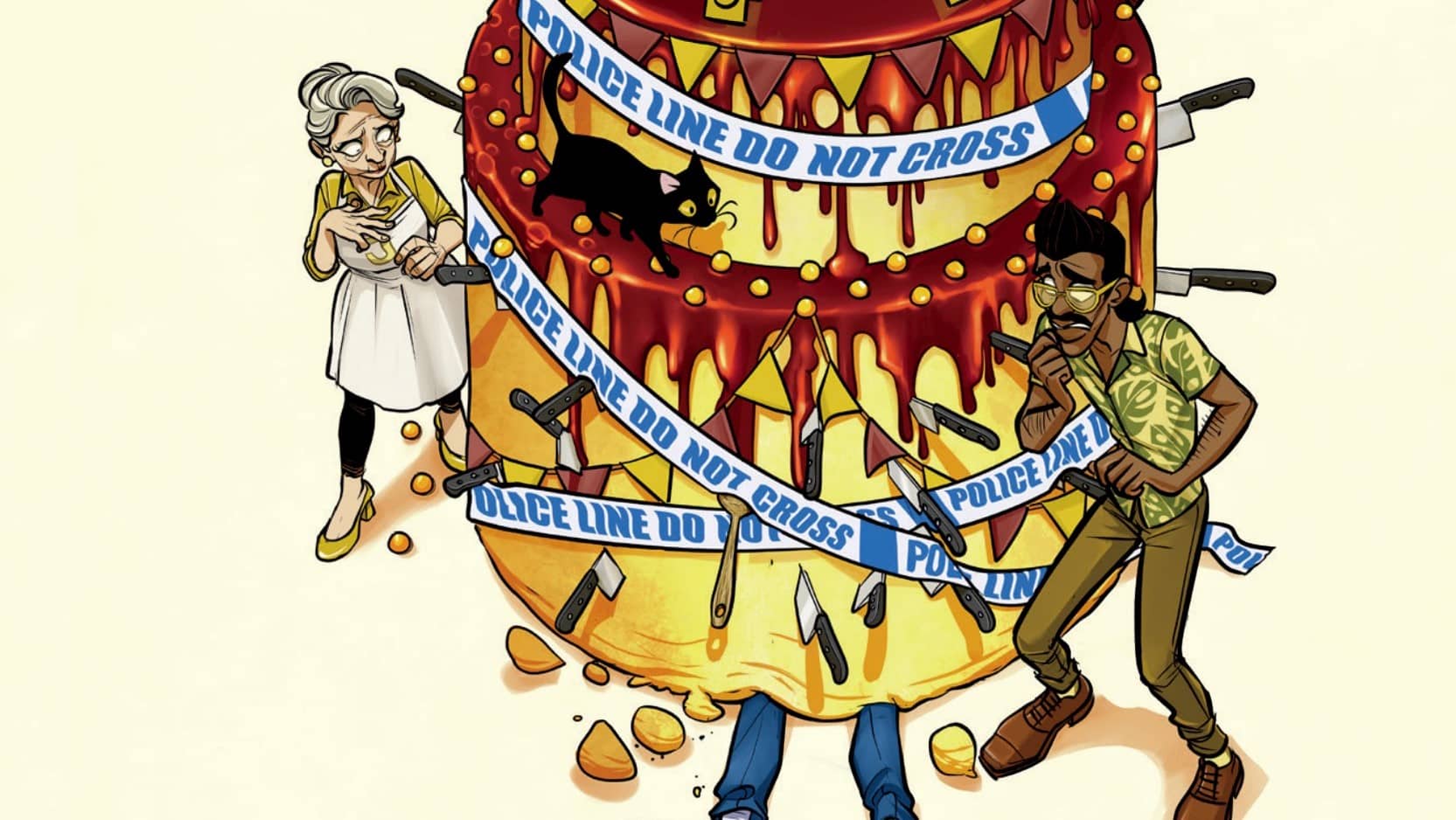My god, Bobby, didn’t you know those pants are for a woman? Deadbox #2 is written by Mark Russell, drawn by Benjamin Tiesma, colored by Vladimir Popov, lettered by AndWorld Design and published by Vault.
A magical sketchbook and an artist with his head squarely up his ass doesn’t sound like a good combination, does it? Also, the hotel where he’s staying is cursed as fuck. Good luck, bud. Hotell vol. 2 #3 is written by John Lees, drawn by Dalibor Talajic, colored by Lee Loughridge, lettered by Sal Cipriano and published by AWA.
When a heroin warehouse burns down, the mob knows whom to call. Newburn #2 is written by Chip “Big Daddy” Zdarsky, drawn by Jacob Phillips and published by Image.
Will Nevin: Hey, Ian, do you like Ice Cream Man and The Silver Coin? You know, those super popular anthology series?
Ian Gregory: Ask anyone, I love a good anthology. I’m a verifiable anthology fiend.
Will: Same here, but that’s too bad, fucko, ‘cuz we’re not reading those for this column of comics odds ‘n’ ends. (Cheap plug: Check out my coverage of ICM with Ari Bard here.) Instead, we’ve got some anthology-adjacent books in Deadbox and Hotell. Oh, and more Newburn. That’s not a bad consolation prize, right?
Ian: Newburn is just going to keep showing up in these, I suspect. We had a bit of a theme going this week, and then wham — it’s Newburn time! But hey, I don’t mind.
Deadbox #2: Tweak It, Tweak It Real Good

Will: I believe — well, actually, more like I guess — your reception of Deadbox is going to be coloured (Sorry, that’s a gratuitous dig at Newburn’s wonky British English in a series set in New York, but we’ll get there) by your opinion of its author, Mark Russell, and his satirical style as seen in books like The Flintstones and Second Coming. So spill it: What’s your overall take on the guy?
Ian: My take: I have no take. I’ve never read a Mark Russell comic before this week, and while I’ve heard people talking about Flintstones and Snagglepuss over the years, I’ve never actually sat down to read one of his series.
Will: First time for everything, I reckon. Me? I like about 95% of what Russell does and wish the remaining 5% was 89% less wacky. (Second apology of the day for all the unnecessary math, Loyal Content Consumer.) Case in point here: We have a little morality play about Bobby, a fella who accidentally enjoys a pair of women’s pants and is subsequently ostracized from his community. Russell has a lot to say about conformity and the big-time oppression of small-town life, but the inciting incident — again, a guy liking a pair of pants that happen to be made for women — seems too silly and takes the oomph out of what might be a more emotionally resonant point. Reading this as a queer male, I dunno, it feels a little dismissive. Did I miss the point?
Ian: Actually, this bothered me quite a lot. For one thing, I feel like Russell is operating on some caricature of Southern Christian living derived only through reddit.com/r/atheism posts. This is just such a nonsense starting point that all the subsequent messaging about conformity feels silly and unearned. Homophobia is still a problem, but it doesn’t make itself known by someone accidentally putting on a pair of women’s pants. It feels like a major disconnect between Russell and the way homophobia actually makes itself known, especially in Christian communities.
Will: I’d imagine this is a consistent complaint of both Russell and, say, someone like Jason Aaron who targets the hypocrisy in evangelical Protestantism but tends to deal more with surface-level stereotypes. Overall, though, I like the concept of Deadbox — sort of a meta anthology with each issue based on a different movie from a rental kiosk stocked only with the films of the damned. Think Needful Things crossed with Twilight Zone. If it ever gets out of delay hell, I’d like to see this (1) continue and (2) get a bit more serious.
Ian: I like the juxtaposition of the main story with these Movies From Hell World. I wish the movies seemed structurally more like movies — it feels like we’re reading their IMDb summary more than “watching” a movie, and that takes away a bit from the concept. The problem is that I’m not sure I can get invested in the real world setting and its characters, who exist with only slightly more characterisation than one of Aesop’s animals.
Hotell vol. 2 #3: You Can Check in, but Probably Never Leave

Will: I was under the impression that this is an anthology series, and I guess it is? There’s probably too much connective tissue to make this a true “pick it up at any point” series — I know this particular issue made much more sense after reading the preceding issues (That’d be the four in Vol. 1 and the first two in the current run). Anyway, I got more to say, but what did you think about this?
Ian: Each volume is a series of connected short stories that all appear to pay off at the end. So, while reading Vol. 1 will give you more context for the premise (and some of the characters), it’s not strictly necessary. I like this approach, and having read Vol. 1 I was much more alert in these issues trying to pick apart where the stories overlapped. There’s a puzzle-like aspect to it, where an unusual event in one panel of issue #2 turns out to be a pivotal moment in issue #3 for a different story. I think it’s a clever setup.
Will: Having read all seven issues in this series, I gotta say, I think this is the weakest one. By no means is it bad, but it comparatively suffers by being heavily tethered to both #2 and whatever will follow it. Also, our main character — an artist who suddenly gets high on his own supply after one too many cursed drawings — seems fairly thin and unable to carry this story on his own. Writers can change the world, bring down empires and define epochs upon the strength of their words. Artists? Who gives a shit? *ground opens up, swallows Will whole*
Ian: I think that Hotell definitely works best as a series and not standalone issues (Maybe that runs contrary to the whole “anthology” concept, but whatever). If anything, I was reminded of Junji Ito’s “Oshikiri” cycle of short stories — interrelated horror stories that eventually coalesce into a moment of catharsis connecting every individual story. This works great for horror as a genre, allowing you to explore a variety of premises (and allows your characters to die) while still telling a compelling longer-form story. I like the visual horror in this series, and while the individual premise of this issue (the artist) is a little thin, seeing how it fit in with all the other moving parts of the plot was very satisfying. I enjoyed this more than Deadbox, both on an individual level but also because I think its overall structure is better thought out.
Newburn #2: Yup, Still Good

Will: *crawls out of the earth, singed by the darkness of a thousand hellfires*
Another issue, another mob mystery solved by our man Newburn. Look, if you asked me, I would not burn down the mob’s heroin warehouse. But I guess that’s just me? Anyway, we’re getting deeper into Easton’s world, and it seems like he’s torched more than a few bridges. It also feels like we’re seeing him at the height of his influence and powers — do you think the overall narrative here is his fall? Or his redemption?
Ian: It’s hard to say, but I think he’s due for some kind of reckoning. Issue #1 showed us a mystery where we didn’t really have much sympathy for the dead guy. This issue is all about the ways that Newburn’s influence hurts people, people outside the gangs. It does a better job of situating Newburn in the moral gray area, and giving us an arc to look forward to: Will Emily be successful in reigning Newburn in, or will she die like the rest? I can’t say exactly what the trajectory is, but I expect that, by the end of this series, Newburn won’t be a “mob detective” anymore, but that might be of his own choice — a fall, and a redemption, so to speak.
Will: I really like the series’ design visually and narratively with the interludes from Emily’s journal. What else stands out to you from this book?
Ian: Love the character designs on all the background characters, especially the ones interviewed by Emily. Next time you’re reading a Big Two comic, keep an eye on the background characters: How many are old? How many are overweight? How many are POC? Phillips is doing a good job of making this New York feel like an actual diverse city, filled with real people.
Does This Smell OK?
- Hotell vol. 2 #2 has a great two-page spread with a really neat layout. Go check it out.
- To be honest, I’m still laughing about Bobby putting on women’s pants in Deadbox #2, and the entire town reacting like they’ve spotted Solid Snake. That’s some “gaydar.”
- Don’t hold your breath for Deadbox #3. It’s been pushed from Oct. 27 of last year to Nov. 17, then Dec. 15, Feb. 2, March 16 and now April 6.
- One “favour,” two “favourites” and four “neighbourhood”s in Newburn #2. Still not OK.
- Leftover news of the week: Bad lo mein results in the amputation of a 19-year-old’s legs and fingers.
- Other leftover news: Fucking comiXology. The storefront is a dumpster fire, and the app isn’t much better. Thanks, Jeff Bezos.
- Are there really 81 dishes in which the leftovers actually taste better? Bon Appetit seems to think so.
- We got a little confused on when Rogue Sun was dropping, so we’re hitting that next week, as well as Mike Mignola’s Radio Spaceman and (shock) Newburn #3.

